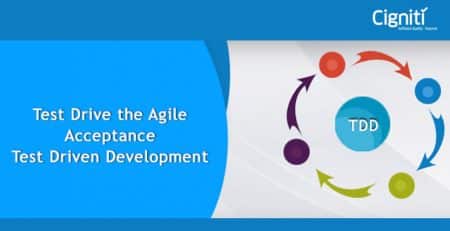10 Parameters to Measure the Success of Your Agile Efforts
As per the 9th Annual State of Agile Survey, a compilation of inputs from almost 4,000 people, ‘From 2012 to 2014, the percentage of respondents who had distributed teams practicing agile jumped from 35% to 80%.’
However, establishing and implementing Agile methodologies is not enough. We also need to align and select the best fitting Agile Metrics that help analyze if the Agile process is really helping us gain anything – or if it is just being followed for namesake.
Certainly, identifying the right parameters on how to measure agile success is easier said than done. Moreover, the challenge is compounded by the fact that these metrics are sometimes wielded as weapons to highlight what hasn’t been accomplished rather than as tools to facilitate process improvement.
As per the respondents who participated in the Survey, at least 11% did not even know of any agile measurement metrics to be used – while almost 58% believed that On-time Delivery is one of the most accurate and widely accepted metrics. In addition to these perspectives, the 9th Annual State of Agile Survey report also delves into the concept of “Agile measures of success,” shedding light on how respondents perceived and evaluated these measures.
#1 On-Time Delivery
According to the State of Agile survey, 58% of respondents measured agile initiatives based on on-time delivery.
On-time delivery means delivering the expected item with the same features on the agreed-upon date while signing the documents. Metrics such as Burn down and Burn up charts help determine what is being delivered and if it is on time.
#2 Product Quality
48% of the respondents said they measured agile success based on product quality.
Measuring Quality is tricky as it can be interpreted based on client satisfaction, growth in ROI, or the correctness of tests performed during SDLC. The velocity with which working software is built is considered to confirm if the quality standards are met for a product developed using the Agile methodology. All things Continuous, therefore, become very important – continuous testing, monitoring, planning, etc.
#3 Customer/User Satisfaction
44% of respondents measured agile initiatives based on customer or user satisfaction.
Metrics for customer/user satisfaction include statistics related to sales figures, support calls made compared to the number of features developed and delivered in a given time frame, or usage of a product or website.
#4 Business Value
44% of the respondents to the Survey said their Agile measures of success were based on business value.
Many underlying principles of the Agile Manifesto give due importance to the deliverance of business value. Metrics for measuring the same are usually well defined – for example, the Statement of Work (SoW). Additionally, if each feature being developed for a product can be linked to a value, it can prove to be a good metric.
#5 Product Scope (Features, Requirements)
39% of respondents measured agile initiatives based on product scope.
When you have a goal and are clear regarding what you want to do over a specified time, you can easily track the status and enjoy the progress as you complete it. This metric can be collected on a daily basis in the Agile Stand-Up meetings – and can be represented as burn-down charts or Kanban boards.
#6 Project Visibility
30% of respondents said their agile measurement initiatives were based on Project visibility.
To share clarity regarding a Project, the progress needs to be shared across multiple platforms in diverse forms (for example using a Dependency Chart) so that everyone knows what is it that they need to contribute towards the success. This data also creates an atmosphere of internal cohesion, leading to a DevOps-like culture that helps manage the project in the best manner possible.
#7 Productivity
29% of the respondents said their parameters to measure agile success was based on productivity.
Again, the metrics that can be collected via a Burn up chart serve as a great resource for measuring the productivity outcome. The story/feature count clearly shows which team is delivering what outcome.
#8 Predictability
25% of the respondents said their agile measurement initiatives were based on predictability.
Velocity Trends are used to generate metrics related to predictability. These trends help us understand the amount of work that has been completed for say a quarter, and what was the average rate of doing the same. A fluctuating velocity reflects unpredictability, changes, or a lack of knowledge.
Story Cards (based on the user stories) completed per week may be the best predictability indicator.
#9 Process Improvement
23% of the respondents said they measured agile initiatives based on process improvement.
To measure outcomes that help understand whether or not you are continuously improving, it is suggested to use the Cumulative Flow Charts that explain how work is flowing across SDLC.
#10 Don’t Know
All said and done – it was only 11% of respondents of the State of Agile Survey who said that they aren’t aware if any metrics are being used to measure the success of their Agile related efforts.
Agile teams also look at defects found during development and after product launch, bugs postponed to the next release, how long it takes to fix business critical defects.
Conclusion
Diligently selecting the right agile measurement metrics helps agile success and create a seamless culture and helps all stakeholders understand the organization is business and how the right metrics can help improve delivery processes. These metrics also provide smart and measurable goals based on the different needs of different organizations.





Leave a Reply